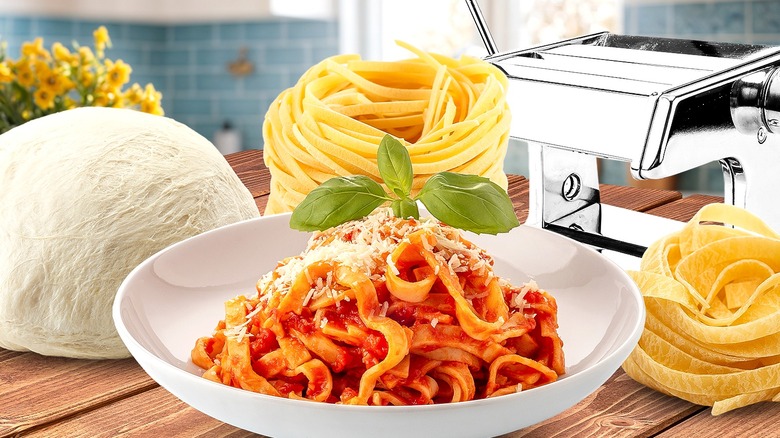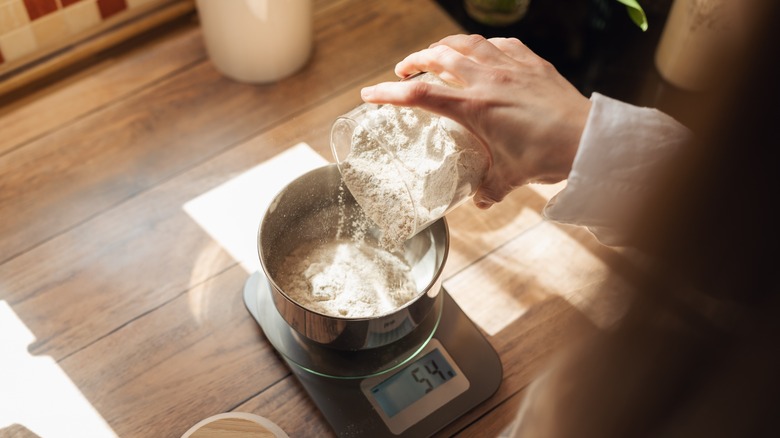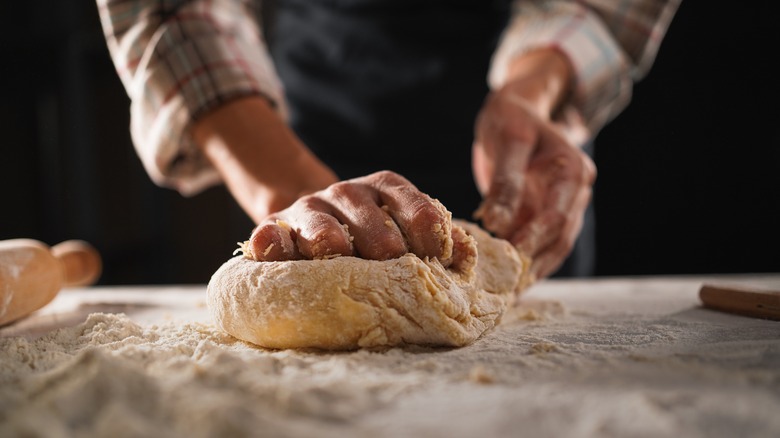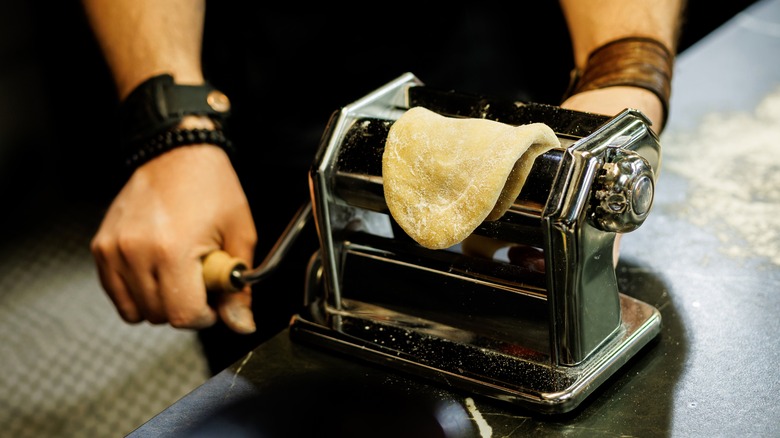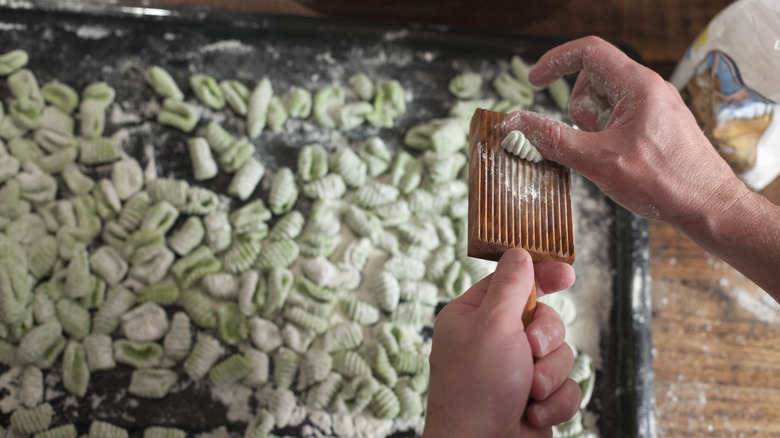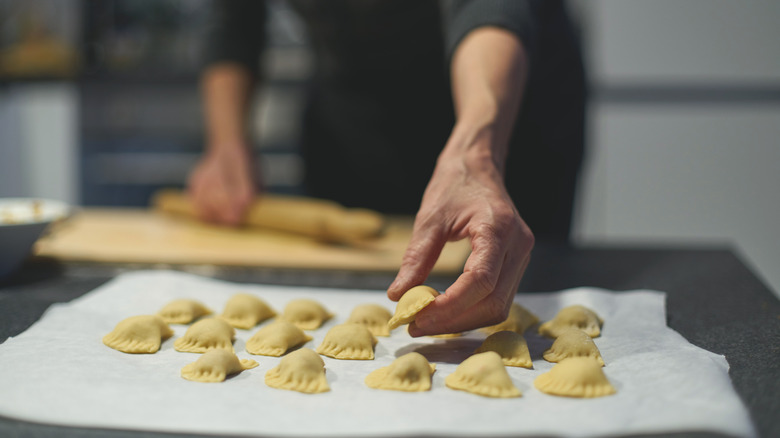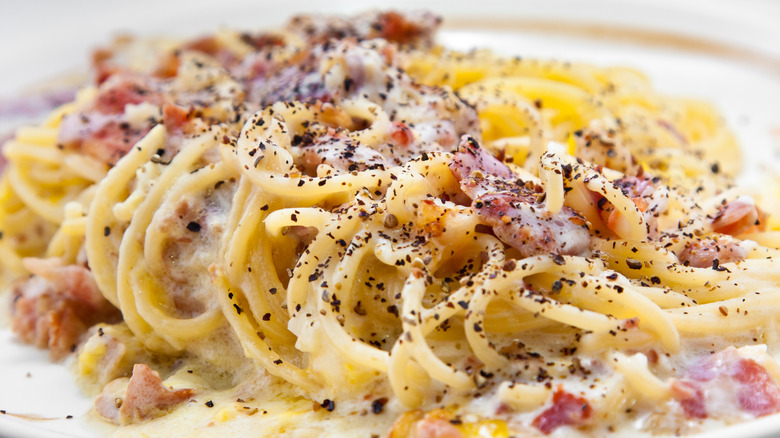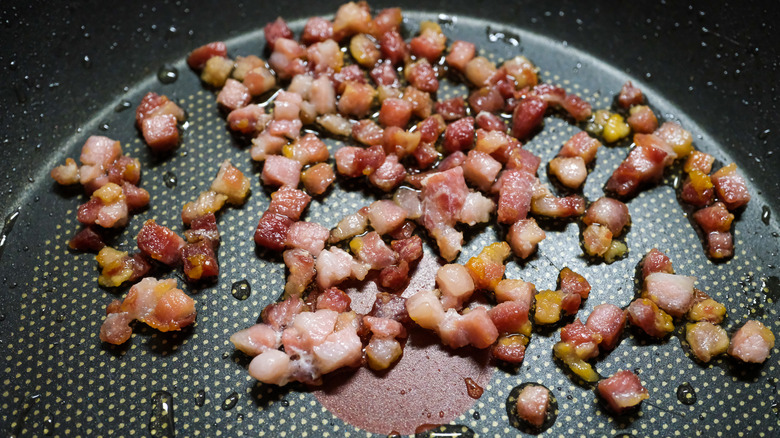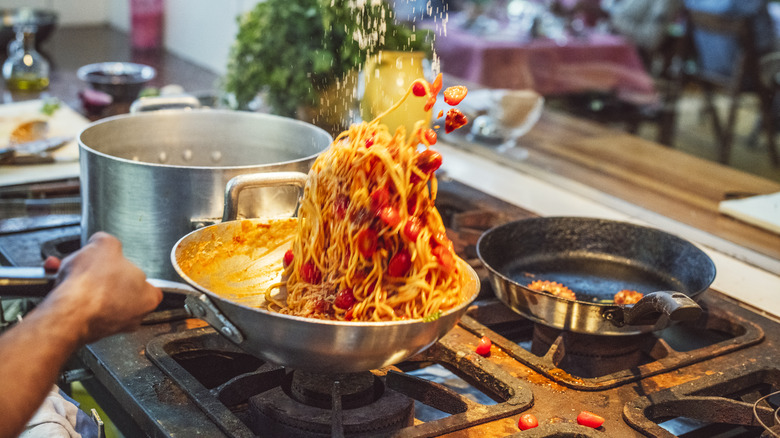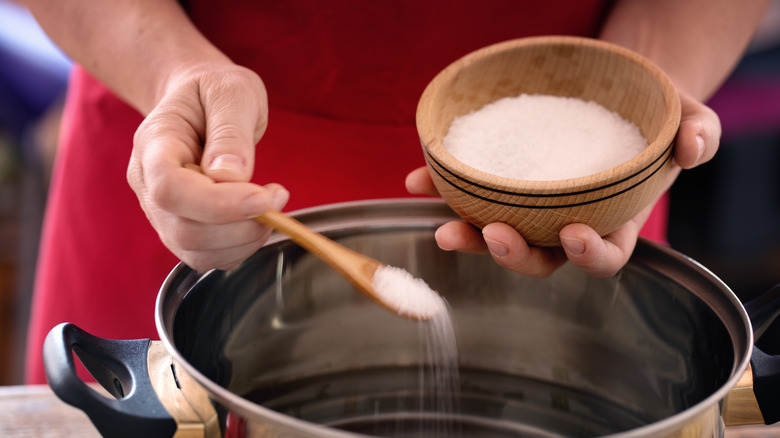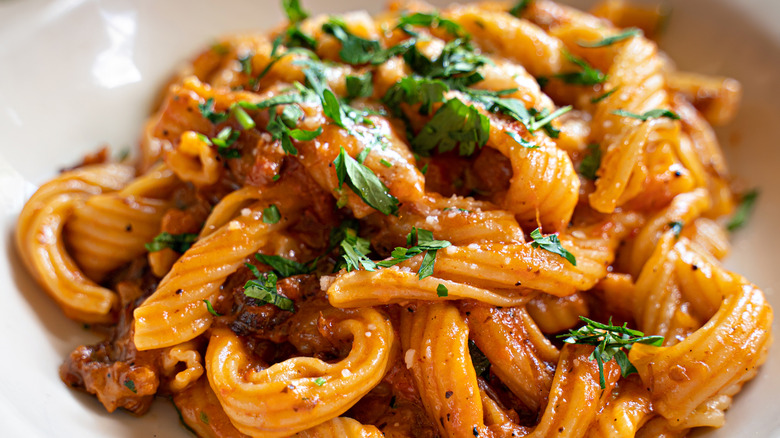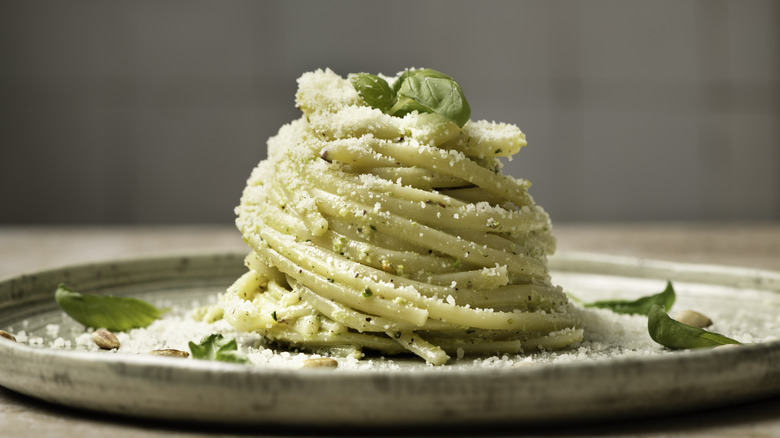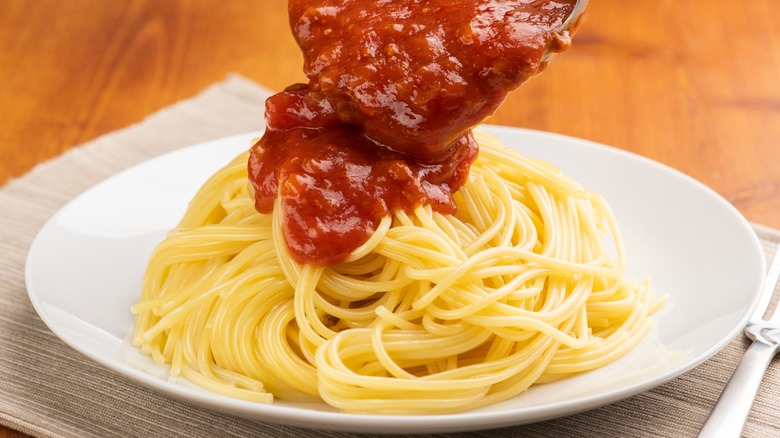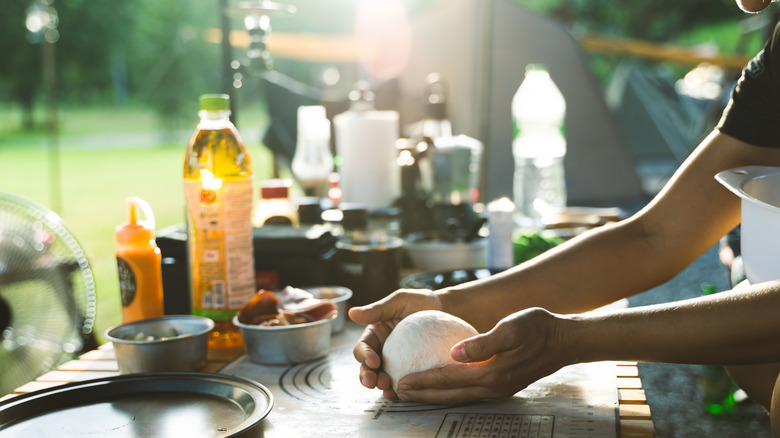The Ultimate Guide To Making Restaurant-Worthy Pasta At Home
Making pasta from scratch might feel like diving into the deep end of culinary waters, but let's demystify it. The truth? It's a game-changer for your kitchen repertoire. As someone who's spent way too many hours rolling dough and obsessing over sauce-to-pasta ratios, I can confidently tell you that restaurant-worthy pasta isn't about expensive tools or secret family recipes — it's about technique, patience, and maybe a little flour on your floor.
The beauty of homemade pasta is its versatility. With just a handful of ingredients and some focused effort, you can create silky fettuccine, pillowy ravioli, or rustic pappardelle that makes your dinner guests think you secretly opened a trattoria.
I've worked a few pasta stations on a few hot lines in my day. You spend enough time touching and eating raw, semi-raw, and cooked pasta dough, dunking fresh and dry noodles into salty water, and sauté-flipping emulsions — you're bound to feel a little bloated after service. But more importantly, you're bound to know good pasta from bad just by looking at it. That's a gift I'd like to give to you. This guide will take you through every essential step, from mixing and kneading dough to pairing it with the perfect sauce. The best part? It ain't that hard. Prepare to impress yourself.
Selecting the right flour for your pasta dough
Flour might seem like the least glamorous part of pasta-making, but it's the foundation of everything. Start with 00 flour (if it's your first time hearing this term, here is a guide on what is 00 flour) the queen of pasta dough — its ultrafine grind gives you that elastic, silky dough perfect for delicate ribbons of tagliatelle or angel hair. If you're aiming for a chewier bite, semolina flour is your go-to, lending structure to shapes like rigatoni or orecchiette. And if you're feeling adventurous (or indecisive), try blending the two for a balance of tenderness and firmness.
What about all-purpose flour? No, no, no. Alright — it's fine in a pinch but won't give you that next-level texture. Think of it as the reliable but non-brilliant backup singer, not the star of the show. And let's not forget hydration: Different flours absorb moisture differently, so if you're mixing and the dough feels dry, don't panic. Adjust with a few drops of water — or an extra egg yolk if you're feeling fancy. Flour might seem basic, but trust me, it's anything but when it comes to great pasta.
Mastering pasta dough hydration and kneading
Getting your pasta dough just right is part science, part therapy. Hydration — the balance of flour to liquid — determines everything from elasticity to ease of rolling. Start with the classic ratio of 100 grams of flour to one egg per person. Crack your eggs into a well in your flour and mix slowly, incorporating the flour little by little until it forms a shaggy dough. If it's too sticky, add a sprinkle of flour. Too dry? A splash of water will fix that.
Then comes kneading, where the magic happens. Think of kneading as waking up the gluten — push the dough forward with the heel of your hand, fold it over, and repeat. It should feel smooth, slightly tacky, and bounce back when poked. Give it a good 8–10 minutes of consistent kneading (yes, you'll feel it in your arms), then let it rest under a damp towel for 30 minutes. Resting allows the gluten to relax, so your dough is pliable and easy to roll. You've just laid the foundation for pasta perfection.
How to roll pasta like a pro
Rolling pasta is where you turn a lump of dough into something truly extraordinary. A pasta machine is a lifesaver here, but if you're going old-school with a rolling pin, prepare for a bit of a workout. Start by dividing your dough into manageable portions — trying to roll out the entire batch at once is asking for frustration. Flatten your portion slightly, dust it with flour, and get rolling.
With a machine, begin at the widest setting, feeding your dough through while folding it in half each time for the first few passes. This builds strength and creates a smoother texture. Gradually narrow the settings until your dough is paper-thin — light should shine through it when you hold it up. Hand-rolling requires patience and steady pressure. Roll outward from the center, turning the dough frequently to maintain even thickness. Whatever method you choose, the goal is clear: Thin, even sheets that will cook in minutes and taste like a dream.
Cutting techniques for different pasta shapes
Cutting pasta is an art form. Don't believe me? There are entire books about it, and over 300 shapes of pasta. Each shape tells its own story, and getting those cuts right is the difference between "rustic charm" and "what the hell is this?" For long pasta like tagliatelle or pappardelle, start by folding your rolled dough into a loose rectangle, dusting with flour to prevent sticking. Then, with a sharp knife or pasta cutter, slice into even ribbons. The trick? Consistent width. Nobody wants one strand that's spaghetti and another that's linguine.
Short pastas like garganelli or farfalle call for a bit more finesse. Use a ruler or pasta wheel for clean, uniform squares or rectangles, then fold, press, or twist into shape. There are also various pasta shapes you can make with the KitchenAid pasta maker attachment as well as most designated pasta makers. Even irregular shapes, like hand-torn maltagliati, have a method to their madness — just aim for similar sizes so they cook evenly. Pro tip: Keep a damp cloth handy to cover unused dough and prevent drying. Cutting pasta might seem like a small step, but it's the moment when raw ingredients transform into the beginnings of a masterpiece.
Drying and storing fresh pasta properly
Fresh pasta is a beautiful thing, but without the right care, it can turn into a sticky, clumpy mess. To prevent this, drying is your best friend. For long pasta, hang it over a drying rack, a clean broomstick, or even the back of a chair (yes, creativity is encouraged). Short shapes like cavatelli or fusilli can rest on a floured baking sheet, spaced out to avoid sticking. The key here is patience — let the pasta dry slightly to develop a light, tacky exterior.
If you're not cooking your pasta right away, storing it properly is crucial. For same-day use, lightly dust it with semolina flour, cover with a clean towel, and leave it at room temperature. For longer storage, freeze the pasta in a single layer on a tray, then transfer to an airtight container once solid. Fresh pasta, when stored correctly, can keep for up to a month in the freezer — though let's be honest, it'll probably be eaten long before that. Now that you know how to store fresh pasta, it's time to get into sauces.
Creating silky, emulsified sauces
The secret to restaurant-quality pasta sauce is the emulsion. Think of a perfect cacio e pepe. This magical blend of fat, starch, and liquid is what gives sauces that airy, clingy texture. Start by reserving a cup of that starchy pasta water. Never skip this step! It's not just one of the most important tips for making cacio e pepe, but almost any pasta sauce. When your sauce is nearly done, add the pasta to the pan along with a splash of that salty, starchy water, cheese, and your chosen fat — olive oil, butter, or a combination of both. Personally, I like to use a few knobs of cold butter myself.
Then comes the toss. Use tongs or a large spoon to vigorously mix the pasta and sauce, letting the starch from the water bind everything together. The result? A sauce that coats every strand or piece of pasta perfectly. Don't be afraid to add a bit more water or fat as needed — the goal is balance, not drowning. Mastering this technique is how you elevate humble spaghetti and marinara to "who made this, and can I have the recipe?" levels.
Choosing and adding flavorful fats to sauces
Fats are the backbone of great pasta sauces, but not all fats are created equal. Butter adds a luxurious richness that's perfect for delicate sauces like sage and brown butter or a classic Alfredo. Olive oil, on the other hand, brings a grassy, peppery brightness that works wonders in lighter sauces like aglio e olio or pesto. And then there's rendered fat — think pancetta or guanciale — which adds depth and a savory punch to robust dishes like carbonara or amatriciana.
Knowing when to use each fat is key. Butter shines when you want creamy, cohesive sauces, while olive oil's lighter touch enhances fresh, vibrant flavors. Rendered fats excel in heartier dishes, where their intense umami complements bolder ingredients. The trick is balance: Too much fat, and your sauce feels greasy; too little, and it lacks richness. Get it just right, and your pasta will sing with flavor.
The art of finishing pasta in the sauce
Here's a little pasta-making truth bomb: Finishing your pasta in the sauce is the only right way. It's what separates restaurant-level dishes from the "sauce-on-top" versions you may have been guilty of at home. When you finish cooking pasta in the sauce, something magical happens — the noodles absorb the sauce's flavors, while the starch they release thickens everything into a rich, cohesive dish.
Start by undercooking your pasta by about two minutes — it should still have a firm bite when you drain it (don't forget to save that starchy water!). Transfer the pasta to the pan with your simmering sauce, along with a splash of pasta water, and let them mingle. Toss or stir vigorously, letting the sauce coat every inch of the pasta, and adding cheese while you do it. As the pasta finishes cooking, it absorbs the sauce, and the cheese melts and melds into it, creating a seamless harmony. Add a final drizzle of olive oil or a knob of butter for extra gloss (see emulsified sauces above), and you're ready to plate perfection.
Properly salting your pasta water
At one restaurant I worked in, I used to have a sous chef come around and taste my big vat of pasta water every few hours. If it wasn't salty, he'd have my ass. And he was right to keep me in the good habit of dumping a generous amount of Diamond Crystal in it.
If you've ever heard the phrase "salt your pasta water like the sea," here's the clarification: Aim for the Mediterranean, not the Dead Sea. Salting your pasta water is crucial — it's your only chance to season the pasta itself. Without it, even the best sauce in the world will fall flat. Use roughly one to two tablespoons of kosher salt per gallon of water. Yes, it's a lot, but this is pasta's one moment to soak up flavor directly.
Bring your water to a rolling boil before adding the salt, giving it time to dissolve fully before you toss in your pasta. Pro tip: Taste the water. If it's pleasantly salty, you're golden. If it's harsh, dial it back by adding more water. Properly salted water creates a base layer of flavor that makes your sauce sing. It's a small step with a massive payoff, turning good pasta into a dish that pops with every bite.
Pairing pasta shapes with the right sauces
Pairing pasta shapes with sauces is more than just tradition — it's a science rooted in texture and balance. Long, thin noodles like spaghetti and linguine shine with light, oil-based sauces like aglio e olio or carbonara, where the strands can be coated evenly. Chunky, hearty sauces like Bolognese are made for wider noodles like pappardelle, which can handle the weight without breaking a sweat.
For short pasta, it's all about grooves and pockets. Rigatoni and penne excel with robust, chunky sauces because their ridges catch every bit of flavor. Delicate shapes like farfalle or shells? They're perfect for creamy or cheesy sauces that cling to every curve. When in doubt, think about the sauce's consistency — light sauces prefer smooth, flowing shapes, while thick, hearty ones demand pasta that can stand up to their boldness. Nail the pairing, and you'll understand why Italians are so particular and protective of their pasta traditions.
Adding fresh herbs and finishing touches
The difference between good pasta and great pasta often comes down to the finishing touches. Fresh herbs, grated cheese, and a drizzle of olive oil might sound simple, but they're the garnishes that bring everything together. And there are lots of different fresh garnishes you should be adding to pasta. For light, fresh dishes, basil or parsley adds brightness, while heartier dishes benefit from the punch of thyme or rosemary.
Grated cheese isn't just a garnish — it's an emulsifier, a source of salt and umami, and a flavor amplifier. Pecorino Romano's sharpness cuts through rich sauces, while Parmigiano-Reggiano adds a nutty, salty depth. And don't underestimate the power of olive oil. A final drizzle, depending on the dish of course, brings out the flavors in both the pasta and the sauce, giving the dish a glossy, restaurant-worthy finish. These small details take seconds to add but make a world of difference in how your pasta looks, tastes, and feels. Think of it as the encore that makes the entire performance unforgettable.
Mistakes to avoid for a perfect plate every time
Even the most seasoned pasta lovers can fall into a few common traps that turn "restaurant-worthy" into "meh." First up: overcooking. Pasta should be al dente, not mushy. Always taste a strand a minute before the package instructions suggest, because pasta waits for no one. Second: skipping the sauce step. Pouring sauce over drained pasta is a rookie move; always finish your pasta in the sauce to meld flavors and achieve that perfect coating.
Then there's over-saucing — yes, it's possible to have too much of a good thing. Your pasta should swim in flavor, not drown. This is sauce, after all — not soup, not brodo. Finally, don't forget the pasta water, or more importantly, do not dump it all down the drain. That is sacrilege, my friend. That salty, starchy fluid is liquid gold for emulsifying sauces and adding depth. Without it, your sauce can separate or feel heavy. Avoid these pitfalls, and you'll be on your way to pasta perfection every time.
Making fresh pasta part of your routine
Fresh pasta doesn't have to be reserved for weekends or special occasions. With a little planning, it can be part of your weekly repertoire. Start by setting aside an hour to batch-make dough — knead, rest, and roll out enough for a few meals. Once shaped, let the pasta dry slightly, then freeze it in single layers on trays. Once frozen, transfer to airtight bags or containers. Congratulations, you now have fresh pasta on demand.
On busy nights, pull your pasta straight from the freezer and cook it a minute longer than usual. Pair it with a quick sauce like aglio e olio, pesto, or cacio e pepe for a meal that tastes like hours of work but comes together in under 20 minutes. Once you've got the hang of it, you'll wonder why you ever reached for the box. Fresh pasta, when done right, will change your life. No, I'm not exaggerating. Practice makes perfect right? You do something long enough, it's no longer obfuscated and esoteric. It just becomes part of you. Pasta has a special way of doing that.
